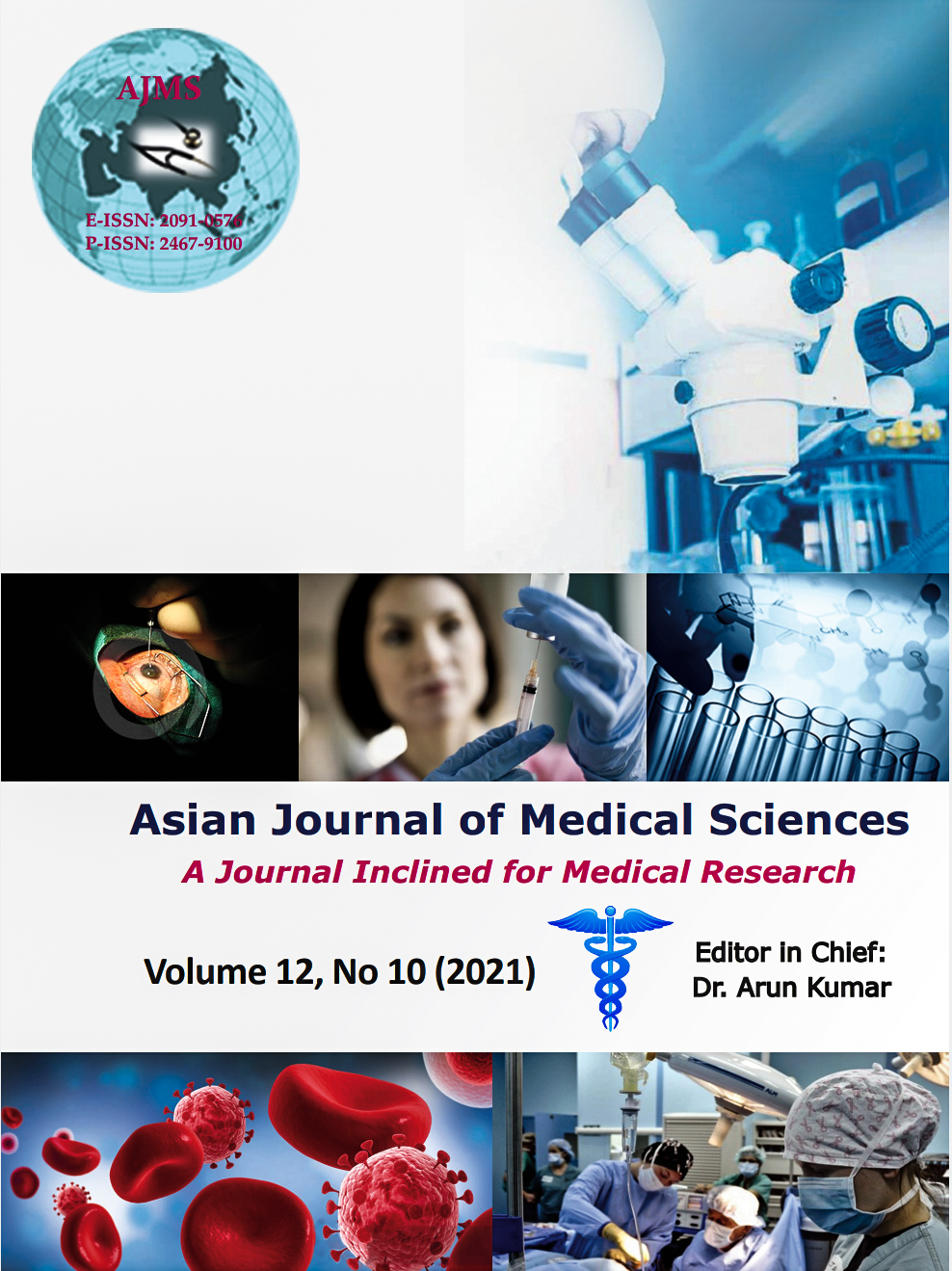Forensic age assessment using Kvaal’s method with digital orthopantomographs (OPG) and comparison with the actual age of the subjects
Keywords:
Forensic dentistry, Kvaal’s method, Digital orthopantomographs (OPG), Age estimationAbstract
Background: Forensic Dentistry is one of the branch of Forensic Medicine which deals with the complete handling of dental evidence, estimation and examination and the evidence obtained would be used in the court for justice. Kvaal and Solheim given a method used on adults for calculation of age with the help of morphological and radiological methods, but extraction was still required. Hence to improve this procedure Kvaal et al made a method which is totally based on radiological analysis.
Aims and Objective: The present study was designed to compare the forensic age assessment using Kvaal’s method and digital orthopantomographs with the actual age of the subjects.
Materials and Methods: Present observational study was conducted in subjects with all the required complement of teeth on either right or left side, completely erupted clinical crown, without any morphological abnormalities for age estimation by Kvaal’s method with digital orthopantomograph as and compared with actual age of subjects.
Results: In the present study out of 100 subjects, maximum number of subjects i.e. 61 were in the age group of 20 – 29 and minimum number of subjects i.e. 7 were in the age group of 50 –59. 43 were females and 57 were males. The regression equation was derived for all six studied teeth and coefficient of determination R2 was found for all the individual six teeth. Coefficient of determination was highest for lower first premolar (0.517) followed by upper central incisor (0.178), lower canine (0.134), lower lateral incisors, upper second premolar and upper lateral incisors. M & W-L were found significant predictors for lower first premolar, lower canine and upper central incisors. Similarly, coefficient of determination (R2) was significant higher for lower three teeth (0.478) than upper three teeth (0.069) with M & W-L were significant predictor. Regression equation derived for all six teeth together shows significant coefficient of determination R2(0.430) with M, W-L both are significant predictors. No statistically significant difference between the actual age and estimated age for all individual six teeth was noted. Mean difference lowest for lower first premolar (0.001) followed by lower canine (0.007).
Conclusion: We noted that age assessment using Kvaal’s method with digital orthopantomographas and actual age of the subjects were comparable & no significant difference was noted. Kvaal’s method with digital orthopantomographas is a better option for age estimation without teeth removal.
Downloads
Downloads
Published
How to Cite
Issue
Section
License
Copyright (c) 2021 Asian Journal of Medical Sciences

This work is licensed under a Creative Commons Attribution-NonCommercial 4.0 International License.
Authors who publish with this journal agree to the following terms:
- The journal holds copyright and publishes the work under a Creative Commons CC-BY-NC license that permits use, distribution and reprduction in any medium, provided the original work is properly cited and is not used for commercial purposes. The journal should be recognised as the original publisher of this work.
- Authors are able to enter into separate, additional contractual arrangements for the non-exclusive distribution of the journal's published version of the work (e.g., post it to an institutional repository or publish it in a book), with an acknowledgement of its initial publication in this journal.
- Authors are permitted and encouraged to post their work online (e.g., in institutional repositories or on their website) prior to and during the submission process, as it can lead to productive exchanges, as well as earlier and greater citation of published work (See The Effect of Open Access).




